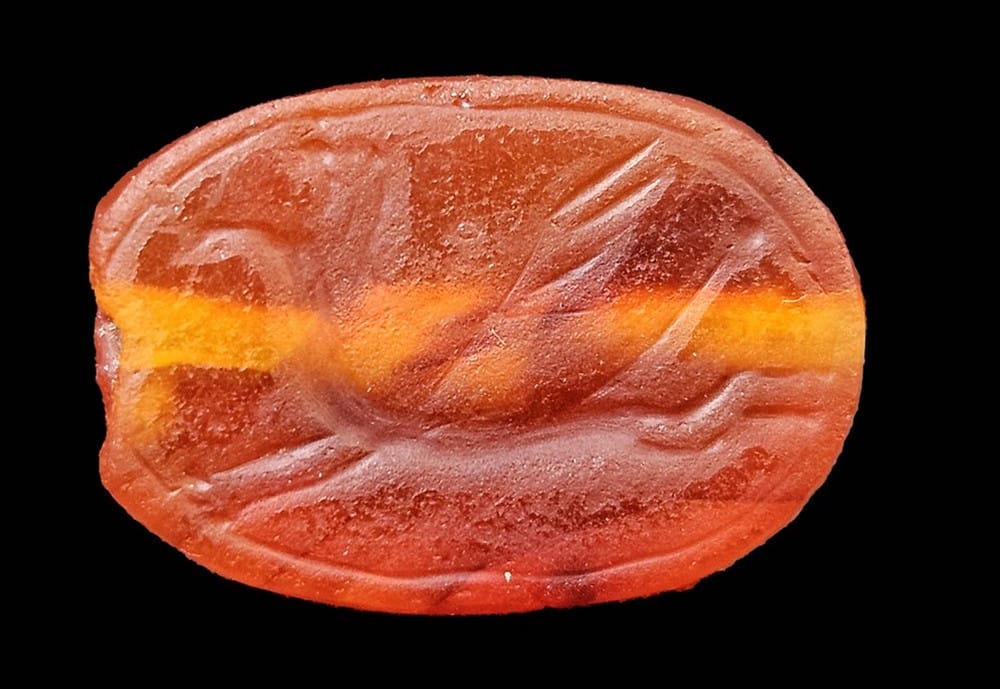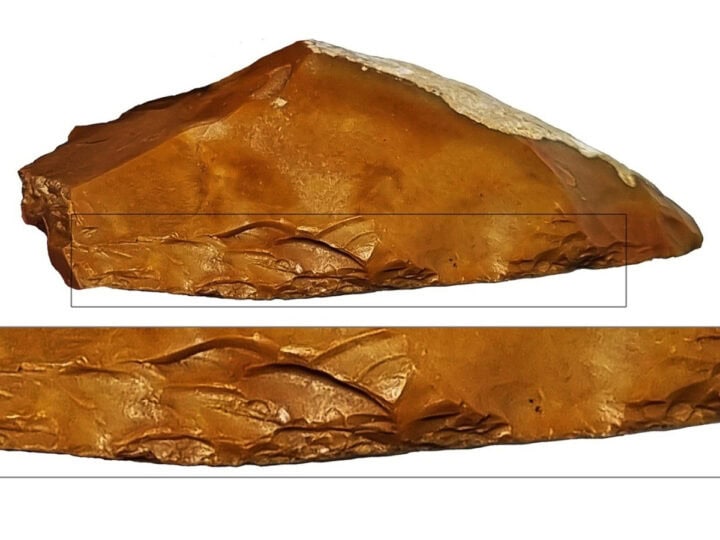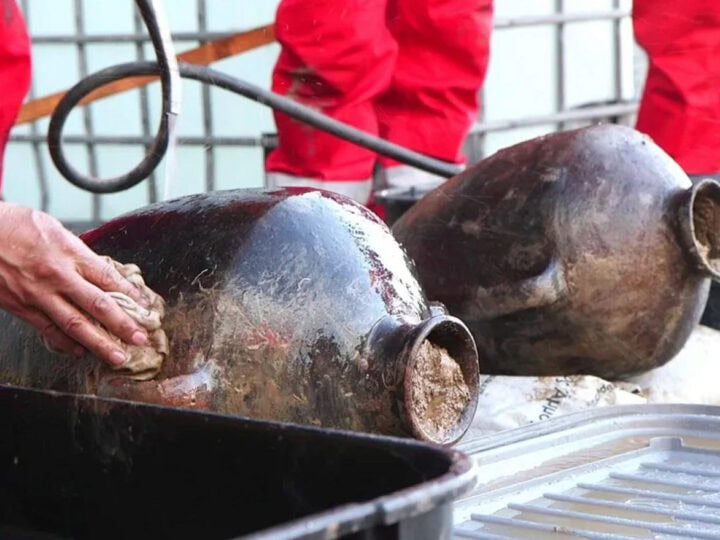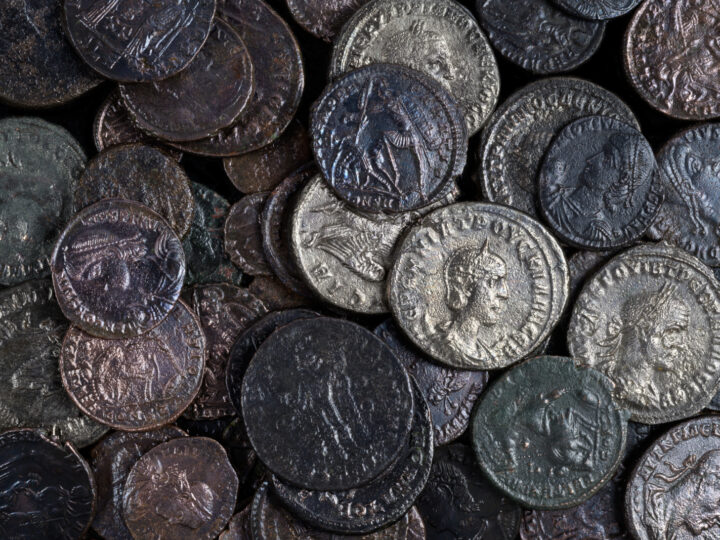In an exciting turn for the archeological community, a 2,800-year-old engraved stone known as a “scarab” was discovered in Israel’s Tabor Stream Nature Reserve by hiker Erez Avrahamov in early February.
Avrahamov, 45, found the scarab, a small orange stone roughly the size of a thumbnail, during a recreational hike in the Lower Galilee.
“I had a two-day leave from the military and decided to take advantage of the sunny days for a trip,” Avrahamov recounted. “During the trip, I saw something sparkling on the ground. At first, I thought it was a bead or an orange stone. After picking it up, I noticed engravings on it resembling a scarab. I contacted and reported the amazing find to the Israel Antiquities Authority.”
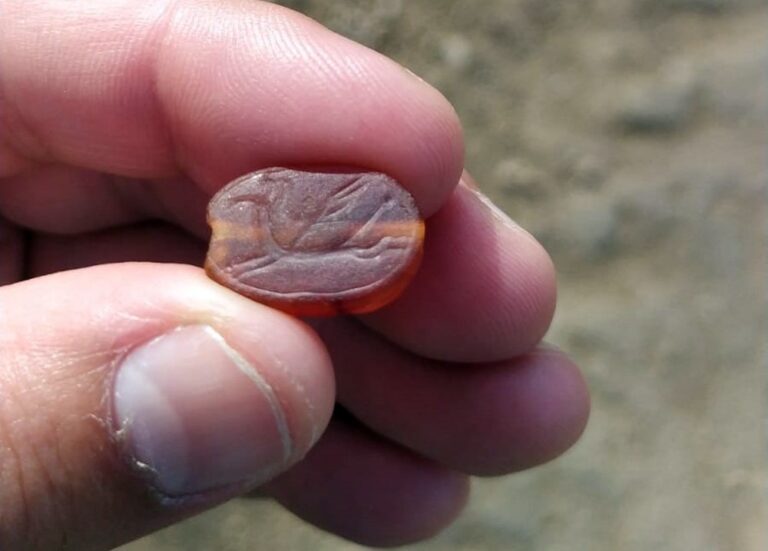
Nir Distelfeld of the Theft Prevention Unit at the Israel Antiquities Authority asked Avrahamov to look closely at the flat side of the scarab to check if it was engraved.
“Immediately I heard an exclamation of amazement over the phone, and he reported to me that he identified a figure,” said Distelfeld.
Further analysis at the University of Fribourg in Switzerland revealed that the scarab, crafted from carnelian, depicted a griffin or a winged horse galloping, characteristic of artwork from the eighth century BCE.
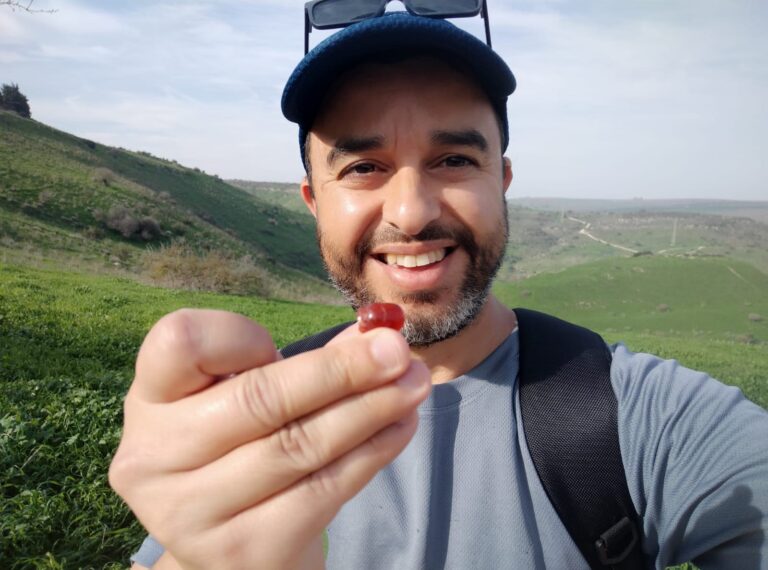
The scarab, a type of seal common throughout the region from the fourth millennium BCE onwards, presents a valuable artifact for understanding ancient civilizations.
Yitzhak Paz, an archeologist at the Israel Antiquities Authority, said it is signficant that the scarab was found in Tel Rekhesh, an ancient historic site linked to the city of Anacharath mentioned in the Bible (Joshua 19:19).
“The scarab … may be from the period of the Assyrian rule and may indicate the presence of Assyrian officials (or perhaps Babylonian) at Tel Rekhesh during this period. The griffin appearing on the seal is a known artistic motif in Ancient Near Eastern art and is common on seals from the Iron Age,” Paz explained.
“If indeed the seal can be dated to the late Iron Age based on iconographic considerations, it may be possible to link the seal to the Assyrian presence in the citadel of Tel Rekhesh, which may be a discovery of great significance.”
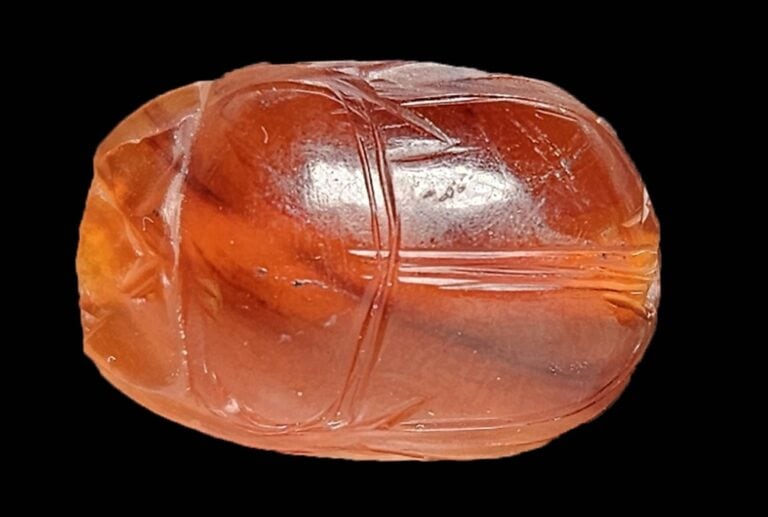
Eli Escusido, director of the Israeli Antiquities Authority, said the special scarab will be preserved in the IAA’s national treasures department for further research.
“Every winter, with the arrival of the rainy season, antiquities begin to ‘float’ and rise above the surface. I urge the public to adhere to the Antiquities Law and ask that if you come across an archaeological find, report it to the Israel Antiquities Authority immediately from the site. The exact place of discovery is crucial for extracting knowledge about it,” he said.




